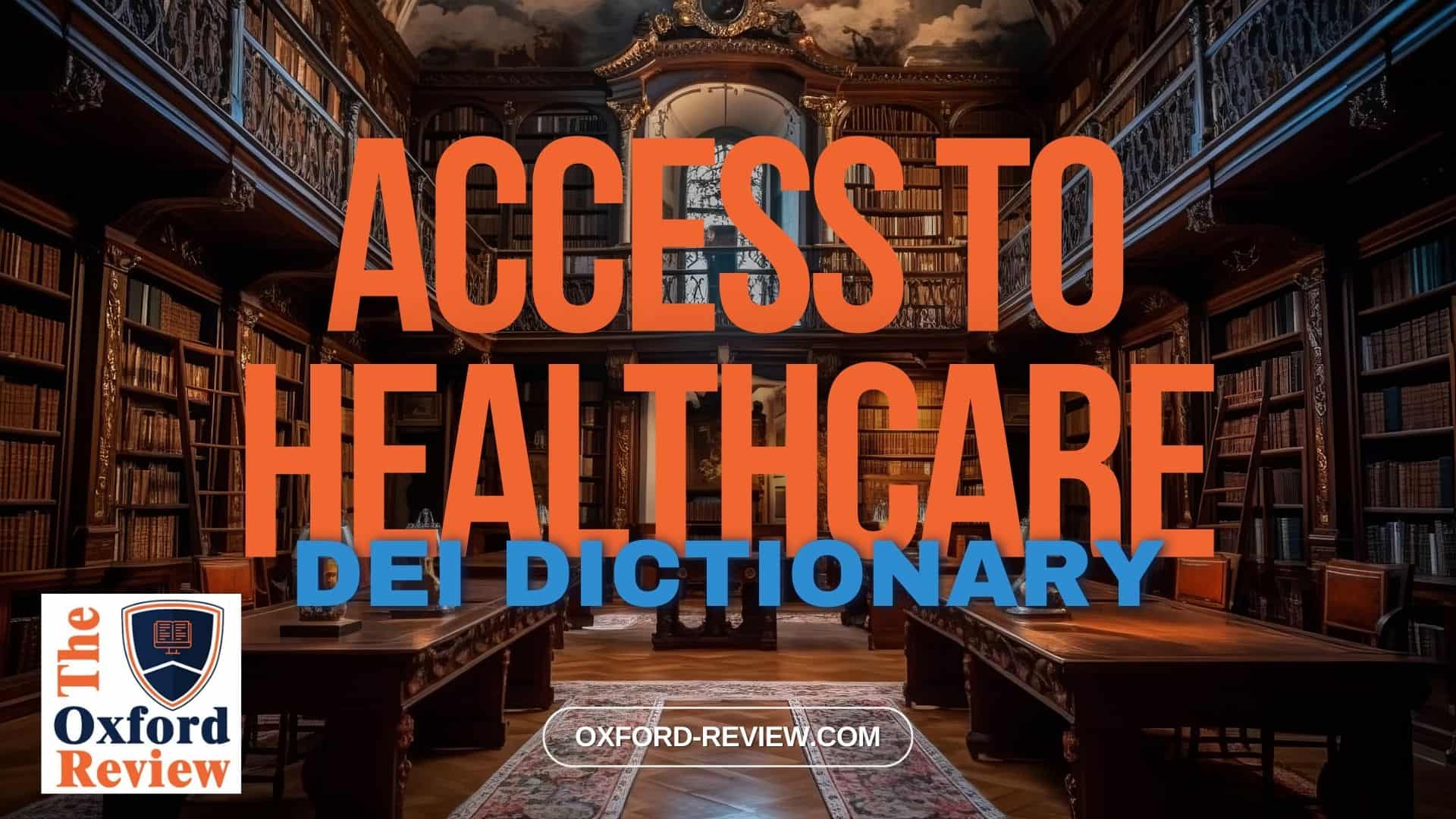Access to Healthcare – Definition and Explanation

Understanding Access to Healthcare: Importance, Definition, and Examples
Access to healthcare stands as a cornerstone of equitable and inclusive societies. It encompasses the availability, affordability, and utilisation of healthcare services by individuals irrespective of their socioeconomic status, geographic location, or other barriers.
Definition:
Access to healthcare refers to the ability of individuals to obtain timely, affordable, and appropriate healthcare services when needed. It involves removing barriers that may prevent individuals from seeking and receiving necessary medical care, including physical, financial, cultural, and informational obstacles. Essentially, access to healthcare ensures that everyone has the opportunity to maintain good health and receive medical attention when required, regardless of their background or circumstances.
Importance:
- Promotes Health Equity: Access to healthcare is vital for achieving health equity, which is the principle of ensuring that everyone has a fair opportunity to attain their highest level of health. By eliminating disparities in healthcare access, individuals from marginalised communities can receive the same quality of care as others, thus reducing health inequalities.
- Prevents Diseases and Complications: Timely access to healthcare services enables early detection, prevention, and management of diseases. Regular check-ups, screenings, and vaccinations can help identify health issues before they escalate into serious complications, thereby improving overall health outcomes and reducing healthcare costs in the long run.
- Enhances Productivity and Well-being: When individuals have access to necessary healthcare services, they are more likely to maintain good health, resulting in higher productivity levels and overall well-being. Healthy individuals are better able to participate in the workforce, pursue education, and engage in social activities, contributing positively to society’s growth and development.
- Reduces Healthcare Disparities: Access to healthcare plays a crucial role in addressing disparities in health outcomes among different population groups. By ensuring equitable access to medical services, particularly for underserved communities such as low-income individuals, ethnic minorities, and rural residents, healthcare disparities can be minimised, leading to improved health outcomes for all.
Examples:
- Community Health Centres: Community health centres serve as accessible healthcare hubs for underserved populations, offering comprehensive primary care services regardless of patients’ ability to pay. These centres often operate in low-income neighbourhoods or rural areas where traditional healthcare facilities may be scarce, thus improving access to essential medical services for vulnerable populations.
- Telemedicine Services: Telemedicine platforms utilise technology to deliver healthcare services remotely, enabling individuals to consult healthcare providers and receive medical advice without the need for in-person visits. This innovative approach to healthcare delivery enhances access to medical care, particularly for individuals residing in remote or geographically isolated areas where access to traditional healthcare facilities may be limited.
Conclusion:
Access to healthcare is a fundamental right that ensures everyone has the opportunity to lead healthy and fulfilling lives. By addressing barriers to healthcare access and promoting equitable distribution of medical services, societies can achieve better health outcomes and foster inclusivity. It is imperative for policymakers, healthcare providers, and communities to work collaboratively to eliminate disparities in healthcare access and ensure that quality healthcare remains accessible to all individuals, regardless of their background or circumstances.
References:
Gold, M. (1998). Beyond coverage and supply: measuring access to healthcare in today’s market. Health Services Research, 33(3 Pt 2), 625. https://www.ncbi.nlm.nih.gov/pmc/articles/PMC1975648/
Baeten, R., Spasova, S., Vanhercke, B., & Coster, S. (2018). Inequalities in access to healthcare. European Commission. https://www.ygeiamou.gr/wp-content/uploads/2023/04/KE-03-18-334-EN-N.pdf
Tzenios, N. (2019). The Determinants of Access to Healthcare: A Review of Individual, Structural, and Systemic Factors. Journal of Humanities and Applied Science Research, 2(1), 1-14. https://journals.sagescience.org/index.php/JHASR/article/view/23
Núñez, A., Sreeganga, S. D., & Ramaprasad, A. (2021). Access to Healthcare during COVID-19. International journal of environmental research and public health, 18(6), 2980. https://www.mdpi.com/1660-4601/18/6/2980
Be impressively well informed

Get the very latest research intelligence briefings, video research briefings, infographics and more sent direct to you as they are published
Be the most impressively well-informed and up-to-date person around...
